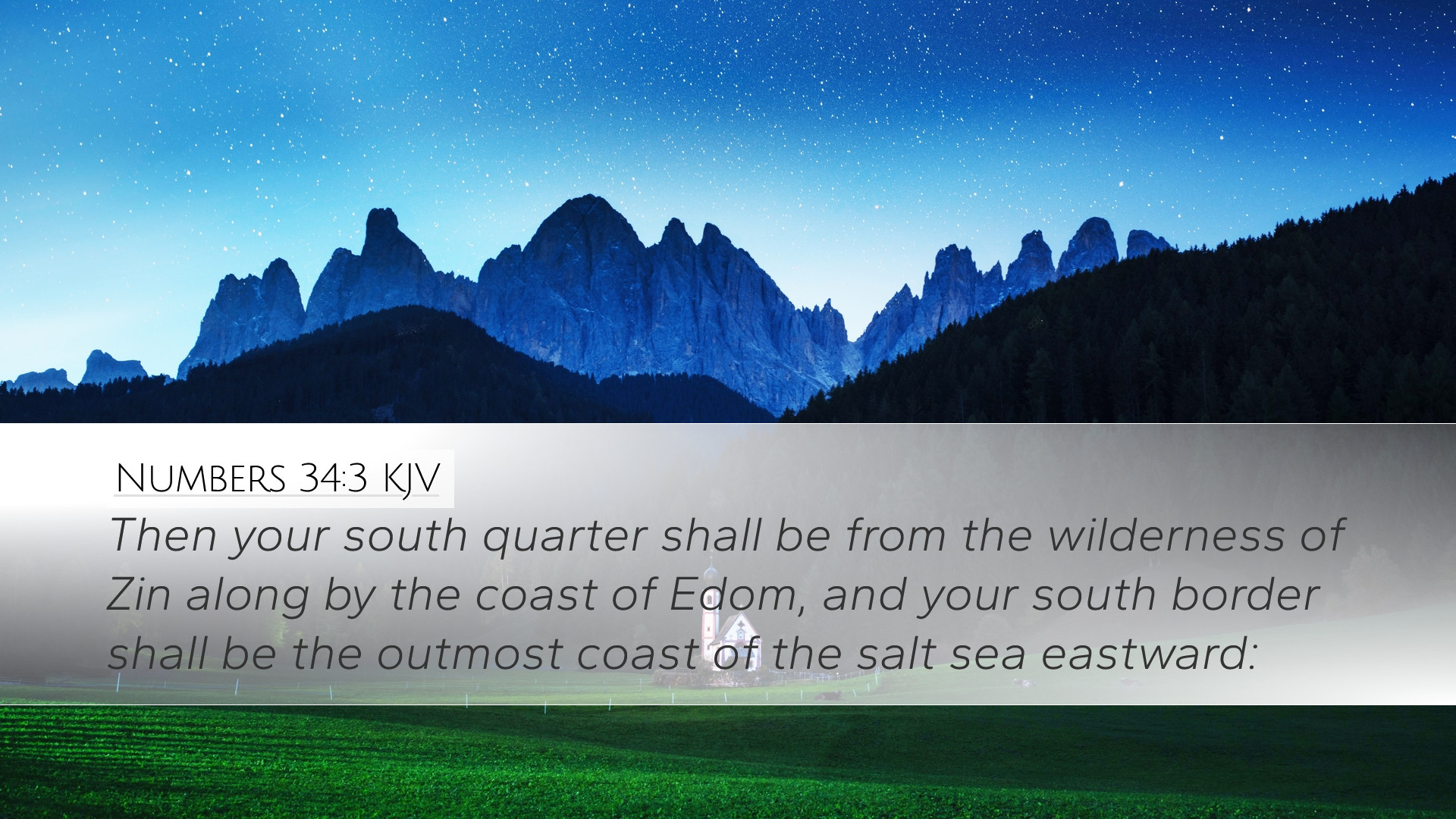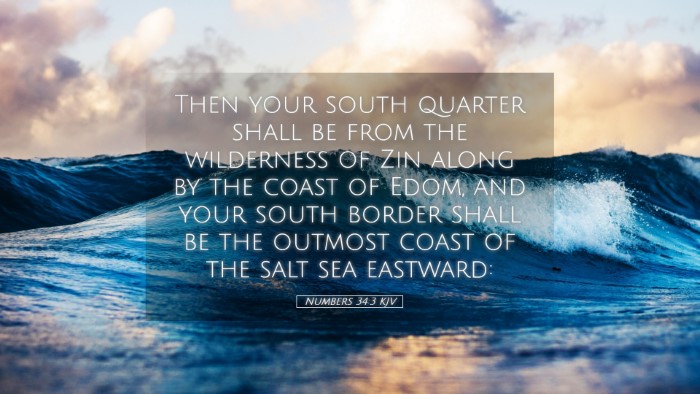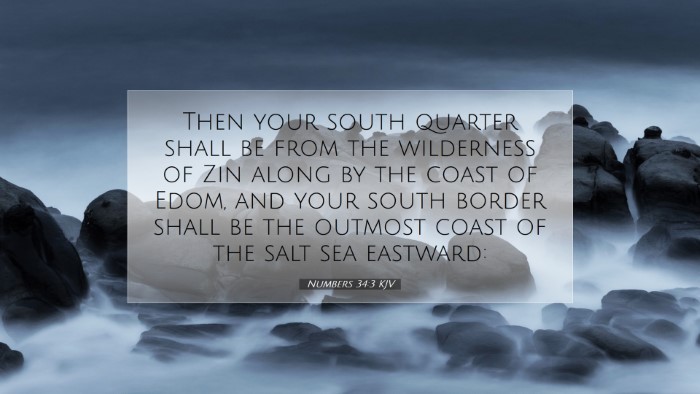Commentary on Numbers 34:3
Text of the Verse: "Then your southern boundary shall extend westward from the wilderness of Zin along the border of Edom; and your southern border shall begin at the end of the Salt Sea eastward."
Introduction
In Numbers 34:3, God provides specific instructions regarding the borders of the Promised Land for the Israelites. This verse is crucial in understanding the geographical and theological significance of divine promises regarding land. It marks a pivotal moment in Israel's journey and serves as a point of instruction for leaders, families, and future generations.
Contextual Background
The Book of Numbers captures the wandering of the Israelites in the wilderness and transitions toward their entrance into Canaan. This chapter, in particular, closes out a significant phase in their journey, emphasizing the importance of divine guidance in setting boundaries as they prepare for settlement.
Exegesis of the Verse
The boundary described in Numbers 34:3 is part of God's directive to Moses, outlining the land that the Israelites will inherit. The delineation of borders serves several purposes:
- Establishing Order: Establishing geographical boundaries demonstrates God's desire for order in the midst of potential chaos following years of wandering.
- Identity Formation: These boundaries assist in forming the identity of the Israelites as a distinct community chosen by God.
- Theological Implications: The boundaries reflect God’s sovereignty and the fulfillment of promises made to the patriarchs.
The Southern Boundary: Insights from Commentators
Matthew Henry provides valuable insights on the significance of the southern boundary. He notes that the directions given to the Israelites were not mere cartography but rather infused with spiritual meaning. The wilderness of Zin, being a desolate place, symbolizes the hardships endured prior to entering the Promised Land. This speaks to believers today about the transformative journey from desolation to divine promise.
Albert Barnes elaborates on the geographical implications, stating that the reference to Edom and the Salt Sea outlines not only physical borders but reflects historical relations with these neighboring entities. He suggests that this serves as a reminder of Israel's unique place among the nations—chosen yet called to coexist and interact with others.
Adam Clarke, in his commentary, emphasizes the meticulous nature of God’s instructions. He indicates that every detail matters, as each part of this divine prescription contributes to the larger narrative of salvation history. The specificity denotes that God's will encompasses all aspects, reminding us that He is sovereign over both the macro and micro elements of life.
Application for Today
Numbers 34:3 invites modern readers, including pastors and theologians, to reflect on several practical applications:
- Understanding God’s Sovereignty: Just as God sets boundaries for the Israelites, He delineates paths for modern believers, guiding their journeys and ministries.
- Community Identity: The communal aspects of the passage can encourage congregations to foster a sense of identity rooted in God’s covenant and shared mission.
- Preparation for Promise: Engaging with God’s directives today allows followers to prepare themselves for entering their promised futures—whether individually or as a church.
Conclusion
Numbers 34:3 serves as a vital verse portraying God’s guidance and the established order of His people as they prepare to enter the land promised to them. The reflections and insights derived from prominent biblical commentators like Matthew Henry, Albert Barnes, and Adam Clarke enhance our understanding of this passage, revealing its lasting significance for contemporary Christian life and ministry. Embracing the implications of such biblical teachings aids in fostering a deeper theological reflection and application of faith in today’s world.


